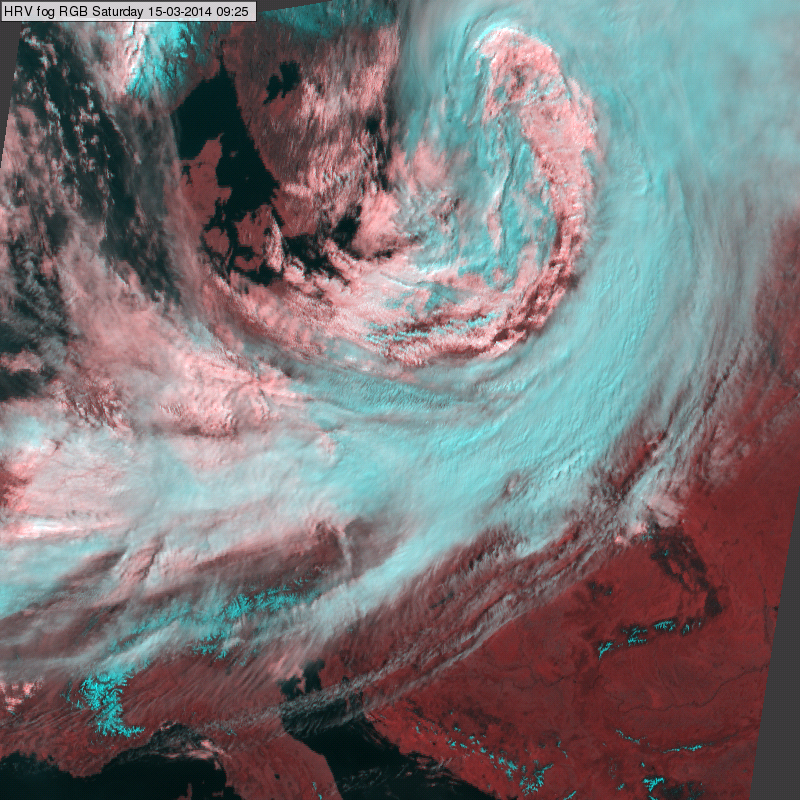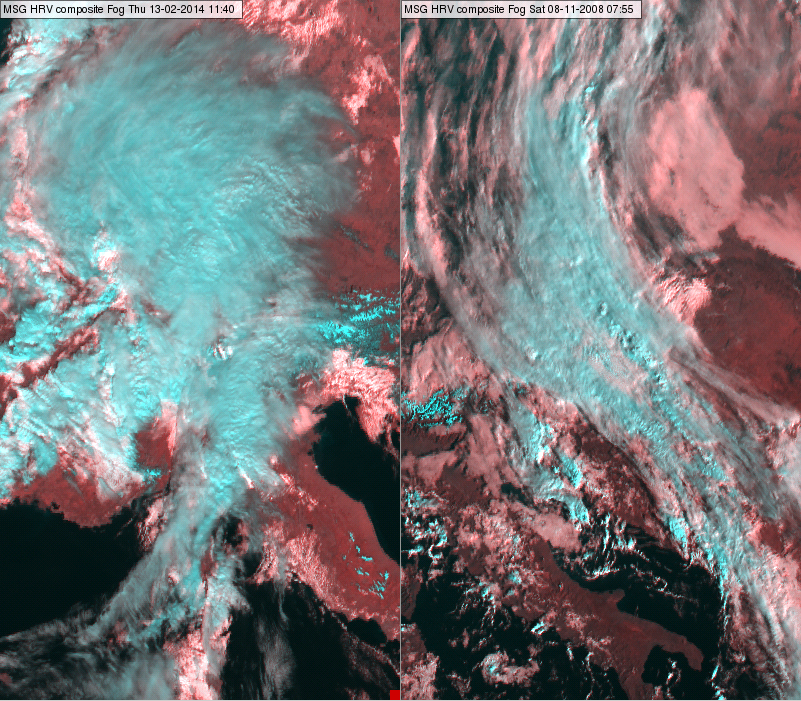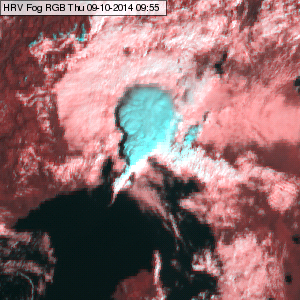Thick ice clouds
Thick ice clouds appear cyan in the HRV Fog RGB images.
The images left and below show frontal cloudiness and deep convective cloud. Note that although thick ice clouds show similar colour as the snow covered land, the colour is not exactly the same. Thick ice clouds appear slightly lighter cyan, with some greyish tones. In our examples snow covered land is seen for example in Scandinavia, the Alps, Carpathian Mountains, Sweden, Dinaric Alps.

Meteosat, SEVIRI HRV Fog RGB for 15 March 2014, 09:25 UTC

Meteosat, SEVIRI HRV Fog RGB for 13 February 2014 11: 40 UTC (left) and 08 November 2008 07:55 UTC (right)

Meteosat, SEVIRI HRV Fog RGB for 9 October 2014, 09:55 UTC
Explanation of the colours of thick ice clouds (see the recipe):
• Thick ice clouds have low reflectivity in the 1.6 micrometer channel, because ice particles absorb the radiation at these wavelengths. After the linear stretching in the 0-70 % reflectivity interval the red colour beam signal becomes medium strong.
• Thick ice clouds have high reflectivity in the HRV channel, resulting strong signals in the green and blue colour beams.
As a consequence thick ice clouds appear cyan with some gray tones in the HRV Fog RGB images: high and equal signals in the green and blue colour beams and medium signal in the red colour beam.
As the 1.6 micrometer reflectivity of the thick ice cloud is usually higher than for snow covered land, the red component is slightly stronger for thick ice clouds than for snow covered land. That is why the thick ice clouds appear slightly lighter cyan with some grey tones.

